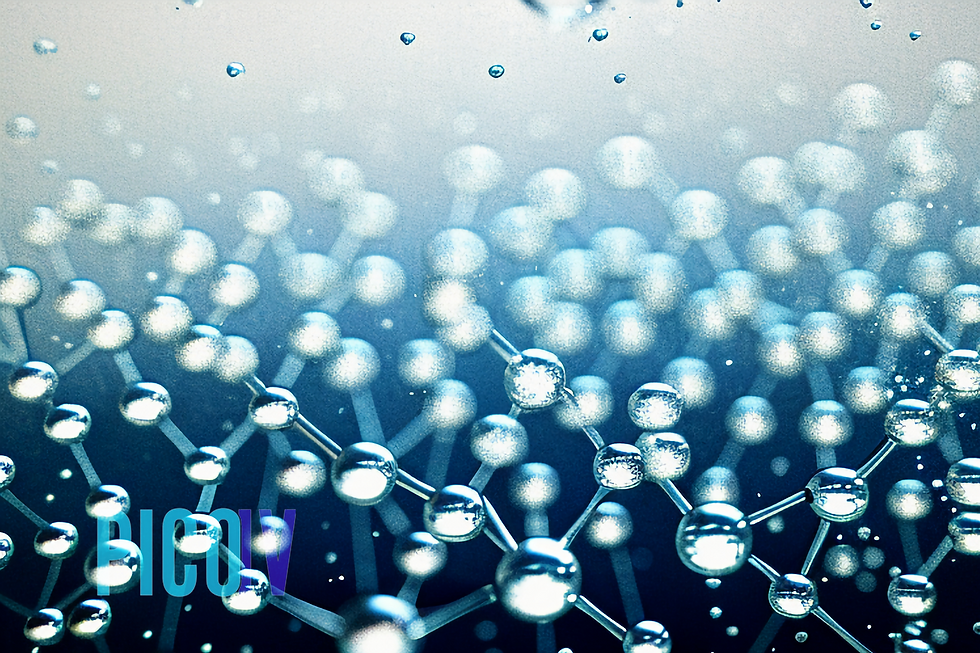What is Pico? Why Particle Size Matters with CBD IV Infusion
- Analytix Media

- Sep 14, 2023
- 3 min read
Updated: Feb 27, 2024
The CBD industry has always been one of innovation. Whether it’s creating new types of products, engineering a way to make CBD oil water soluble, or refining the testing process to discover new cannabinoids found in the hemp plant. It’s these innovations that have made an intravenous form of CBD possible. To make it safe for intravenous use, CBD has to be sterilized. And for it to be sterilized, the particles containing the CBD molecules have to be small enough to pass through the filter. Up until now, that hasn’t been possible. Let’s take a look at what process made pico possible, what pico means, and what the size of particle containing CBD means for the safety and efficacy of intravenous therapy.

Paving the Way with Nanoemulsions
It’s no secret that oil and water don’t mix. The same is true of CBD oil, highly lipophilic by nature. Which is why one of the most popular ways for users to take CBD has traditionally been sublingually with an oil tincture, or in some sort of oral form like capsules or gummies. Both options have served users well, but aren’t without downsides, whether that’s unpleasant aftertaste or only a percentage of CBD actually being absorbed into the bloodstream.

By using nanotechnology, the science of breaking things down to their atomic level, the hydrogen and oxygen bond in the CBD particle can be broken into nanoparticles. Once this is achieved, the nanoparticles are small enough to be fully encapsulated in the water molecule. For reference, that’s approximately one 400th the size of a human hair.
This innovation not only meant that CBD could be used in a number of water-soluble products, but also that the body could more readily absorb CBD as it’s less likely to be broken down by the body’s natural barriers.
How Pico Changed the Game

With a nanoemulsion, the nanoparticles are, unsurprisingly, measured in nanometers (one nanometer equals one-billionth of a meter). While this is no small feat and opened up a wide world of new possibilities, CBD nanoparticles still aren’t small enough to pass through a sterile filtration process. Which means you’d end up with a sterile solution with very little to no CBD.
That’s where pico comes in. It’s one step below nano, meaning a picometer is one trillionth of a meter. By taking what we know with nanotechnology, our team at Apex Labs CBD was able to pioneer a new form of patent-pending technology that took the CBD particle down to a “picoparticle,” making it small enough to pass through a sterile filtration process that removes any bacteria or contaminant. After rigorous third-party testing, this novel form of CBD that is both sterile and potent is now on the market. And all test reports are published and available for public view at PicoIV.com.
Breaking Down Bioavailability

Creating a smaller size CBD particle isn’t just good news for sterilization. It also changes bioavailability for the better. With other forms of CBD, the body is only able to absorb a percentage of the cannabinoid into the bloodstream. Everything from the skin acting as a barrier to the digestion system can inhibit the body’s absorption. With nano emulsions, and now “pico emulsions,” the body is able to absorb a greater percentage of CBD. With PicoIV, because the CBD particle is so small and water soluble, users can experience nearly 100% absorption of the CBD extract. That means less CBD is going to waste in the body and the benefits of CBD have the potential to be more efficacious.
PicoIV is available for purchase by licensed professionals. It offers a truly unique way for users to experience the benefits of CBD as part of their natural wellness regimens.



Comments